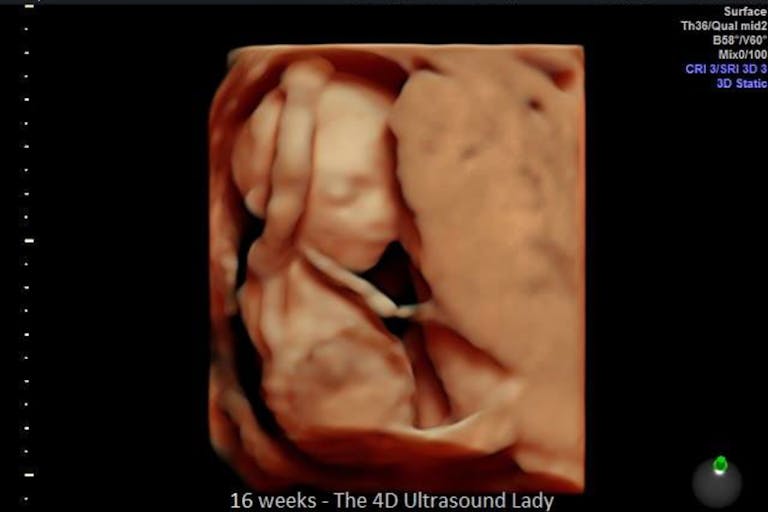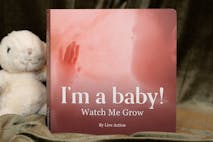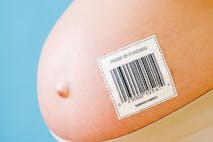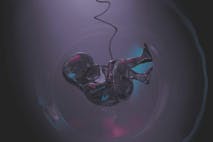
Christian college allows pro-life club after resolving 'misunderstanding'
Bridget Sielicki
·
New England Journal of Medicine describes piercing unborn babies’ hearts with needles
In 1988, the New England Journal of Medicine described a then-new abortion procedure called selective reduction. This type of abortion is performed when a woman has more than one preborn baby in her womb and wants to kill one or more children, but not the other(s). It can be used to “reduce” triplets to twins, or twins to a single baby.
Often this type of abortion is done on women who have undergone in vitro fertilization. In these cases, the woman has multiple babies in her womb, and doctors will usually suggest her to abort one or more of her children. The doctors urge selective reduction because they say carrying multiple babies to term is very risky, and may lead to the woman miscarrying the entire pregnancy. Doctors then suggest that the life of one(s) sacrificed to abortion is far better than the deaths of all the children.
There are two ways that in vitro fertilization can lead to multiple (in rare cases, as many as eight or nine) preborn children in the womb.
One way occurs when the woman is taking fertility drugs, which cause her to release multiple eggs instead of the usual single egg. If these egg cells are all fertilized and manage to implant, she could have many embryos growing inside her.
Article continues below
Dear Reader,
Have you ever wanted to share the miracle of human development with little ones? Live Action is proud to present the "Baby Olivia" board book, which presents the content of Live Action's "Baby Olivia" fetal development video in a fun, new format. It's perfect for helping little minds understand the complex and beautiful process of human development in the womb.
Receive our brand new Baby Olivia board book when you give a one-time gift of $30 or more (or begin a new monthly gift of $15 or more).
Another way a multiple pregnancy can occur is when the doctor transplants multiple eggs into the woman’s womb. In in vitro fertilization, eggs are fertilized outside the woman’s body and then transferred into the womb. However, the risk is very high that these newly conceived lives will not implant and grow into viable babies, but will instead be flushed out of the woman’s body. To maximize the odds that a fertilized egg will implant, many doctors transplant four, five, six, or more fertilized eggs into the woman’s womb. If they all implant, the woman has a problem. Since it is very risky to carry that many babies to term, doctors usually recommend selective reduction, i.e. abortion.
The New England Journal of Medicine describes how these procedures are done:
Using ultrasound to locate each fetus, the doctors would insert a needle into the chest cavity of the most accessible fetus and place the needle tip directly into the heart of the baby. Potassium chloride was then injected into the heart and the heart was viewed on the ultrasound screen until it stopped beating.
In this procedure, the woman and the doctor need to choose which babies are going to be aborted and which babies/baby will be allowed to live. Seeing the babies die on the ultrasound screen can be very traumatic for a woman who, ironically, was going through in vitro because she wanted a baby so much. Often women who have this procedure wonder about the babies that died. You can imagine a woman looking at her child years later and wondering what it would be like if a different baby had been spared. Unsurprisingly, women who have these abortions (as well as their partners) often suffer emotional trauma.
Source: “Selective Abortion, A.K.A. Pregnancy Reduction” New England Journal of Medicine April 21, 1988, quoted in Brian Clowes, PhD The Facts of Life (Royal, Virginia: Human Life International, 1997)
Live Action News is pro-life news and commentary from a pro-life perspective.
Contact editor@liveaction.org for questions, corrections, or if you are seeking permission to reprint any Live Action News content.
Guest Articles: To submit a guest article to Live Action News, email editor@liveaction.org with an attached Word document of 800-1000 words. Please also attach any photos relevant to your submission if applicable. If your submission is accepted for publication, you will be notified within three weeks. Guest articles are not compensated (see our Open License Agreement). Thank you for your interest in Live Action News!

Bridget Sielicki
·
Human Rights
Carole Novielli
·
International
Angeline Tan
·
Human Rights
Nancy Flanders
·
Human Rights
Angeline Tan
·
Human Rights
Angeline Tan
·
Guest Column
Sarah Terzo
·
Abortion Pill
Sarah Terzo
·
Guest Column
Sarah Terzo
·
Guest Column
Sarah Terzo
·
Guest Column
Sarah Terzo
·